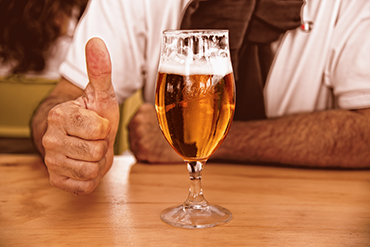Bad beer

When I wrote this headline, I feel bad because beer, by definition, cannot be bad! But… some careless brewers sometimes manage to spoil it. In fact for the preparation of this magical beverage in addition to the soul needed and deep knowledge and not everyone has them.
This article is for beer lovers, but I think it will also be of interest to novice brewers. To begin with, I would like to remind you that there are many kinds of beer in the world. Each of them has clearly defined characteristics, including the taste. They are often completely opposite in different beers. And what is characteristic of one style is not acceptable for another. Today, however, I want to talk about taste faults common to all kinds of beers. Some flavor problems are caused by beer production, some by improper storage, and some by time. No one has suggested a Cure for Time yet…
A metallic taste is a fault for all types of beer. In beer, a metallic taste is formed due to the contact of wort with metal, as well as due to incorrect storage of the hops used.
The astringent, tart taste is the connection between the taste of beer and our sensory sensations on the tongue. To imagine it, think of strong black tea. In my opinion, this is the most valid association. The tartness gives beer the polyphenols found in the malt and hops. This offense is caused by an improper brewing process.
The taste of butter or biscuit is given to beer by fermentation products. In the production of lagers, these products (called diacetyl) are usually produced by the yeast itself during the fermentation process. Usually, the permissible level of diacetyl in beer is regulated, and it is checked both in laboratories and by factory tasters. It should be noted that in some varieties of Czech beer small presence of diacetyl is allowed, and is even characteristic. In the darker beers, however, diacetyl is not usually felt – it is covered by the caramel flavor of special brands of malt.
The aroma of yellow cheese (isovaleric) is also a flavor deflection in beer. Usually, this aroma is caused by the use of old or ” lighted ” hops. By the way, finished beer is also afraid of light because of the hops in it. Only in such beer a different, very specific aroma comes out when exposed to light. They say it’s the smell of… skunk. But I have never seen a live skunk, so I can’t compare.
Sometimes the beer has an aroma of stewed vegetables, cabbage, tomato juice, or boiled corn. Most lagers shouldn’t have any of these flavors. These aromas carry over into the finished beer from the sprouted barley. They can be removed by intense boiling followed by rapid cooling. Even though these aromas are not unacceptable in the mainstream beers, they are present in some historic German lager brands and there is nothing you can do about it.
So, I have listed only five flavor faults in beer, but there are many more. At the courses of the British company FlavorActiv tasters are trained to recognize more than 50(!) taste disorders of the smallest concentration. Among them there are some very unusual ones, for example Butyric is usually associated with the aroma of… a infant. It is imparted to the beer by a certain kind of bacteria.
What should you do now? Probably try to read more about the beer you’re drinking, and don’t forget about “practical training”. After all, what is a defect for one kind of beer may be characteristic of another. For the most part the general public does not feel all these deviations, because they are usually so minor that not everyone can recognize them. There are times, though, when a beer is really spoiled…
Most importantly, you don’t need try finding faults in each one beer. Remember that beer is designed to bring people happiness!















